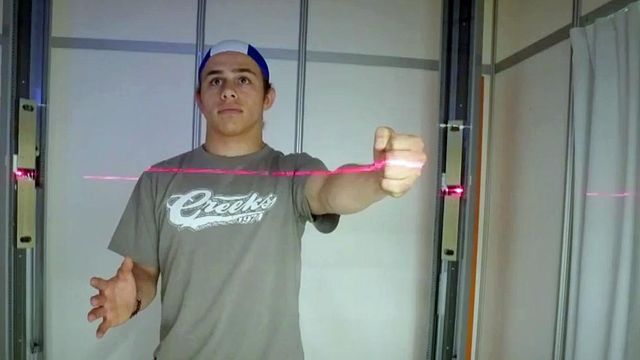Sizing America: Cary company works to help standardize clothing sizes
No matter how a person is shaped, many people are exactly alike when it comes to shopping for clothes - frustrated. So, if people are all different shapes and sized, how does a person try to find consistency between brands? A company in Cary is working to find an answer.
Posted — Updated"When you go to try it on it's like, 'I did not picture this at all,'" said Nikki McIntyre. "It is not my size, it might look good on someone else."
But despite the frustration, people head to the store instead of online because they like to try something on before buying.
"I might buy two variations of something just to make sure I have a backup," said Brandon Demery.
At Ease, a boutique in Raleigh, is known for its unstructured clothing.
"I could put a customer in a small in this store, and I could put her in an extra-large," said At Ease owner, Carol Daley.
"You can almost look at it and tell whether you can wear it or not," said Cheryl Dawson, a customer.
Daley said some brands in her store have their own sizes.
"Your body doesn't change sizes, it is the clothes that change the size," said Daley.
"Some brands today use vanity sizing, which means they make it a bit bigger, more generous so that you feel like you're going down a size," she said. "That's exciting for people."
Kaufman said at her store, she wants customers to get emotionally disconnected from the label.
"One of the things I always try to tell our clients is, 'Don't even think about the size. Don't get hung up on the size...just go for the fit and what feels good,'" she said. "The good thing is if you're working with people who understand body types, I can look at you and tell you what size you'd be in all of our brands."
"One of the things that's really important is client education and, when people come in, making sure that they know we have a lot of different price ranges and a lot of different sizes."
A company in Cary is working to find an answer.
"Size NorthAmerica is the largest size survey on U.S. and Canadian soil to date," said Jamie Campbell, with Human Solutions.
Zach Johnson, of Apex, participated in the survey.
"I'm 15 and I'm about 6'5" right now," he said. "I'm not quite the tallest. There are some people I know that are 6'6" and 6'7" right now as a freshman."
According to Human Solutions, current children’s size tables are based off datasets from 1930 to 1970. They have not been updated since.
Johnson and his mother, Jennifer, were scanned in hopes they can help with the quest to have more realistic sizing.
Professor Cindy Istook said the difficulty of developing standards is that people are not shaped the same way.
"The hourglass shape was what everybody wanted to be," she said. "But when we looked at the population from previous sizing studies, less than 8 percent of the population was hourglass. But all of the sizing systems were related to that shape."
The data collected in the size survey can be used by companies to specifically cater to a certain demographic.
"If we devised a system that was related to shape, we might be better able to meet the needs of the population," she said.
The technology opens up a new world of custom clothing.
She hopes one day people have a place to go to that will lessen the frustration of finding the right fit.
"Do you know a place like that?" Lori Raymond joked.
• Credits
Copyright 2024 by Capitol Broadcasting Company. All rights reserved. This material may not be published, broadcast, rewritten or redistributed.





